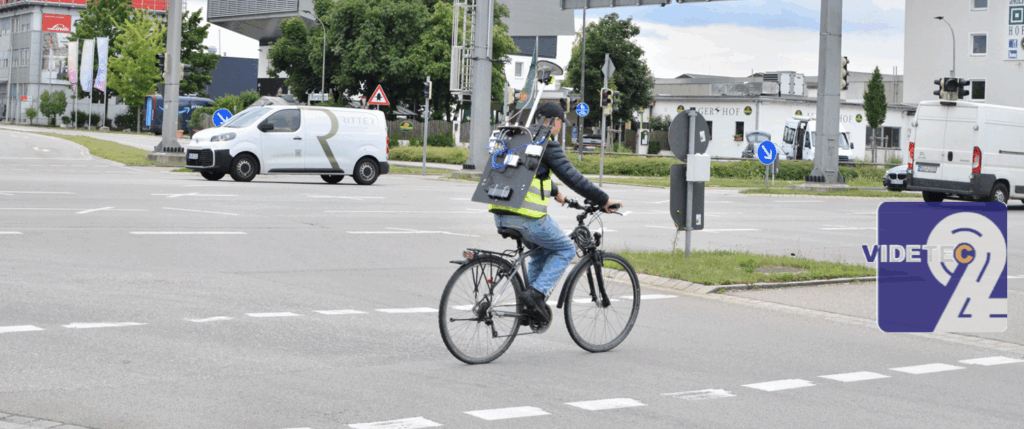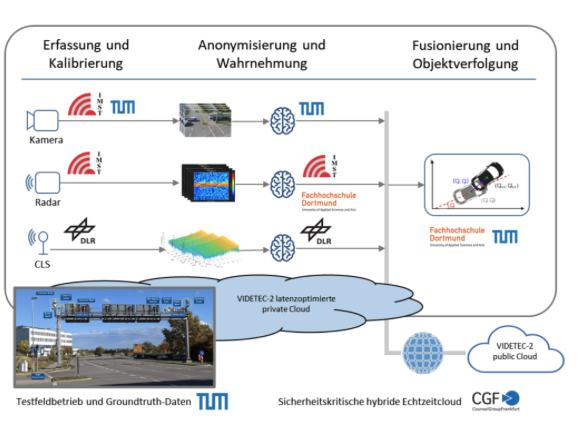Please register here.

VIDETEC-2
Increased traffic safety using intelligent detection technologies
To achieve a safe and CO2-neutral city, intelligent traffic control and the protection of particularly vulnerable road users (VRUs) are necessary. In 2020, heavier road users caused around 37,000 cycling and 17,000 pedestrian accidents with personal injuries. The reliable detection of all road users and the situation or danger assessment derived from this are the basis for achieving these goals.
In VIDETEC-2, new technologies for accurate and reliable traffic situation detection at urban street intersections are researched, developed and integrated as intelligent road infrastructure. The traffic data collected will support automated and connected vehicles (AVF) in urban traffic in preventing collisions. Extensive radar and communication localization surveillance (CLS) data from real traffic situations is recorded, which is a prerequisite for training the AI.
The aim of the project is to demonstrate the two methods micro-Doppler radar and CLS for the detection, location and classification of road users in the described application scenario. In contrast to on-board sensors such as radar and lidar, infrastructure-based detection technologies can also be used to integrate non-equipped or non-directly visible/detectable road users – especially VRUs – into intelligent traffic management solutions.

At an existing test field intersection, traffic data is recorded in real time using additional micro-Doppler radars and CLS and converted into forecast movements using AI. Pre-processed data is transferred and made accessible using common cloud and V2X solutions. The research group is a network consisting of 2 SMEs, 2 universities and a research company, which is supported by associated partners from industry and the municipal level.
Results
Effects
- Recording of extensive data sets from real and statistically relevant traffic situations.
- Verified AI algorithms to project traffic situations.
- Increased traffic safety, efficiency and mobility, inclusion of vulnerable road users in urban traffic.
- Usability and publication of the data as a multiplier effect for other traffic applications.


